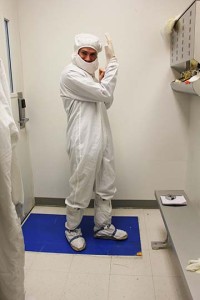The plane landed at the phoenix airport, the length of the flight was dwarfed by anticipation. The lights of the city gleamed bright from the airplane window; the night was still young.
We walked through the airport briskly as we were eager to explore what we would call home for the next five months. Mesa was waiting. In awe I sat there, we were driven from the airport to the hotel. Seeing the places and things I have only seen in photographs reminds me that things always have more impact in real life.
The next day we toured the Mesa Center for Higher Education, home of Wilkes Mesa campus. We all had different ideas of what the center would look like, but no one expected what we were about to see.
The City of Mesa had put $8 million into gutting and renovating what was a 20-year-old courthouse and turning it into a place for two colleges – Wilkes University and Westminster College

. The building was nicer than most of our main campus, something none of us expected. It rivaled the quality of our new science building back home.
After touring Mesa and Tempe for the weekend, it was time to start our internships. Alex and I showed up at Entrepix the week a huge customer was in town. Needless to say, our plant tour was short and we were thrown into our projects right away.
Mostly everyone was too busy to help us, but we landed on our feet and had only some minor hiccups. Our first project we were to do together, it was a system to disperse a chemical they needed in their clean room, where they polish silicon wafers for customers. It also needed to warn the user whether the chemical tank was low, just right, or too high.
We were given a pile of old relays and sensors along with a warning light on a pole. We managed to dig up data on all the components and make progress, quick. By the end of the week, we had made friends with a few of the employees over lunch, and finished the warning system.
It worked flawlessly, showing a red light when low, a green light when safe, and a flashing green when too full. One of our supervisors apologized for “throwing us into the deep end” as interns, as they didn’t have time to ease us in with a major customer in town.
But overall, he was impressed how well we did, comparing the experience to what would happen if we were in careers. All total, getting thrown into the “deep end” wasn’t bad, as long as you remember to swim.